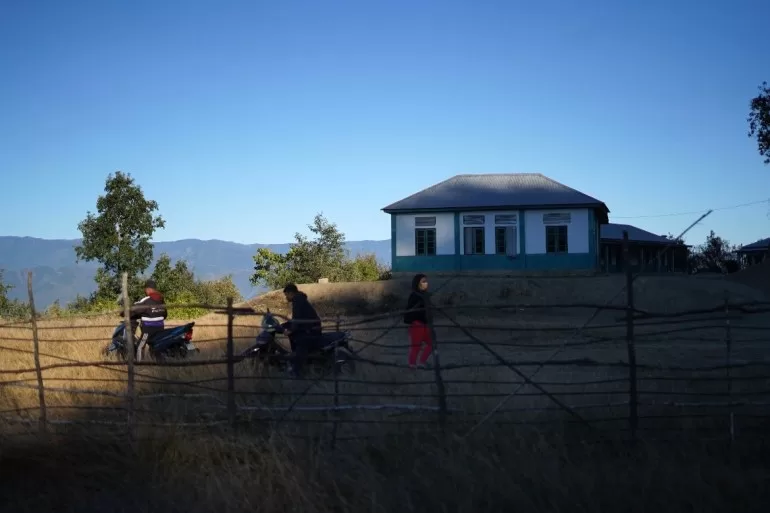In the northeastern Indian border village of Zokhawthar, perched on a mountainside amid green hills, Vanlalchaka’s farm has been a safe haven for refugees fleeing the civil war in neighbouring Myanmar since 2021. Five refugees live there currently and Vanlalchaka has been leading efforts in the village, which sits on the banks of the Tiau River, to help others coming from across the border.
Like his ancestors, he said, he has never acknowledged the political borders that divide his ethnic tribe – known as the Chin in Myanmar, Mizo in India’s Mizoram state and Kuki in the Indian state of Manipur.
Vanlalchaka’s wife, BM Thangi, is from Myanmar’s Chin state. Vanlalchaka goes by a single name as is the custom in his community.
“The people of Zokhawthar and Khawmawi [the adjacent border village in Chin state] operate as a single village,” said Vanlalchaka, sitting with Thangi, 59. “When someone dies, we join the funeral process; when someone falls ill, we cross the border to visit patients and stay overnight if needed.”
That might not be possible any more.
As Mizoram prepares to vote on April 19 in the first of seven phases of India’s national election, its border communities are grappling with a deep rupture in their way of life.
For centuries, several Indigenous communities in India’s northeastern states of Mizoram, Nagaland, Manipur, and Arunachal Pradesh have shared the same ethnicity and lived on both sides of the present 1,600km (1,000-mile) international border between India and Myanmar. Their coexistence as one community, in effect, continued even after India and Myanmar gained independence because of a largely porous border.
In 2018, the Indian government of Prime Minister Narendra Modi went one step further in its outreach to the country’s northeast and to the then-democratic government of Myanmar: it declared a free movement regime with Myanmar that allowed people on either side of the border to cross 16km (10 miles) into the other country without a visa. People needed a border permit, valid for a year, to stay on the other side of the border for about two weeks at a time.
But this February, weeks before the multi-phase elections begin, the Indian government scrapped the pact “to ensure the internal security” and “to maintain the demographic structure” of the regions bordering Myanmar, said Amit Shah, India’s home minister.
That decision came amid increasing clashes in Myanmar between a range of rebel groups and the military that grabbed power in 2021 through a coup. Those clashes have in turn sparked a refugee crisis, turning towns like Zokhawthar into safe havens for fleeing people. But many in India’s northeast see a deeper political reason behind the decision to seal the border: blaming migrants and refugees is a convenient escape from addressing deeper internal security failures that have led to the eruption of violence in the region in recent months.
For Vanlalchaka and others in his village, though, the politics is secondary — and the end of the free movement regime feels personal.
“The central government’s [decision of] border fencing and the end of the FMR will separate our families,” said Vanlalchaka. “It is just unfortunate,” his wife Thangi added.
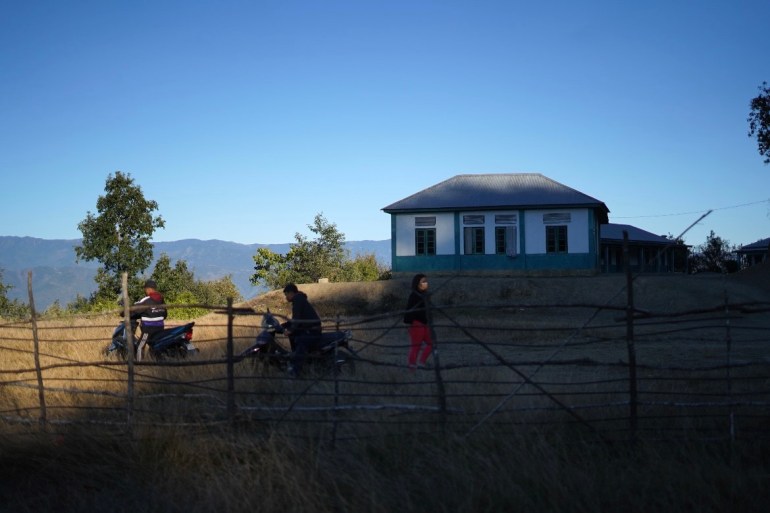
‘For what?’
From trade to farming, the lives of thousands of people have long been dependent on open borders: Zokhawthar’s favourite betel nuts and handmade cigarettes are bought from Myanmar; the beer cans have the country’s labels; and getting around Mizoram’s rugged border terrain is impractical without a Kenbo-125 motorbike — which also comes from Myanmar.
“We mainly rely on border trade. If the import of essential commodities for our livelihood stops, most of the residents of this village will have to migrate because they will be jobless,” said Vanlalchaka.
Since the 2021 military coup in Myanmar, Mizoram has hosted thousands of refugees fleeing violence, despite opposition from the federal Indian government, which in September asked the state government to collect biometric details of Myanmar refugees. The state government refused.
Nearly 80,000 refugees and asylum seekers from Myanmar live in India, 53,000 of them since the 2021 coup. Mizoram alone hosts half of them — 40,000 refugees — according to 2023 data from the UNHCR, settled in makeshift camps in villages like Zokhawthar.
“Like other Mizoram residents, we have many close relatives in Myanmar,” said Thangi. Last month, she was joined by her elder sister, Marovi, and her family, who flew from Kalemyo, in Myanmar, amid worsening fighting. “Their house was bombed this morning,” she added, “we are fortunate it didn’t happen while they were at home.”
Their eldest sister, 73-year-old Lalchami ran away with her two children when the raging battles neared their home in 2022. Now, Lalchami and her children live on the farmland of Vanlalchaka, in a makeshift shanty made of wood and tin sheets. Lalchami’s 42-year-old daughter, Malsawmsangi, suffers from breast cancer.
“My daughter’s cancer has now spread to her lungs. If we remain in Myanmar, it will be very difficult for her to get treatment,” Lalchami told Al Jazeera. Their nearest medical facility is in Kalemyo, now a battleground, while medical facilities in Yangon and Mandalay remain inaccessible to them.
“What if we return and the fighting starts again? We are fortunate that she can receive medical treatment in Mizoram,” she said. “In our situation, the attempt to separate us [by the Indian government] is just sad and puts us in a vulnerable position.”
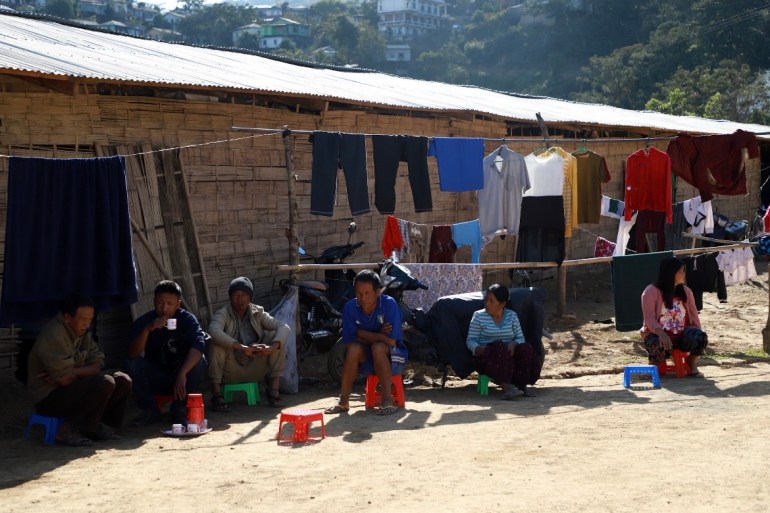
The pushback
The Indian government’s move has led to pushback — not just from border communities but also from political leaders in two states, including allies of Modi’s Bharatiya Janata Party (BJP).
Mizoram’s Home Minister K Sapdanga has described the India-Myanmar border as a colonial legacy driving ethnic divisions. In February, he said people “have been dreaming of reunification and cannot accept the India-Myanmar border imposed upon us”. Earlier, Sapdanga’s party, the Zoram People’s Movement, had made it clear that they would not join hands with either the BJP or the opposition Congress-led alliance to “maintain its identity as an independent regional party free from [New] Delhi’s control”.
In Nagaland, a party allied to the BJP moved a resolution in the state assembly on March 1 arguing New Delhi’s decision to scrap free movement would disrupt age-old ties.
Across the border, the National Unity Government (NUG) — Myanmar’s government-in-exile comprising lawmakers removed in the 2021 coup — too has concerns about India’s policy shift.
“Burma is at war and it is a resistance war; the country is not in a normal situation,” a senior official of the NUG’s foreign ministry said in a phone interview, speaking under condition of anonymity from an undisclosed location. “And we rely heavily on India in seeking humanitarian assistance because our people are running for their lives from the junta.”
The official said the NUG had articulated its concerns to India. “New Delhi needs to acknowledge that the FMR is a humanitarian requirement,” the official said. “A country of India’s stature should not impose that kind of humanitarian crisis on our people.”
Fencing the border and ending free movement is also risky in the long run for New Delhi, which for decades has had a tense relationship with India’s northeast — a region that saw major secessionist movements, some of which are still alive.
“Successive governments have realised that local ethnic communities hold the open border policy dear to their social and cultural existence,” said Angshuman Choudhary, an associate fellow at the New Delhi-based think tank Centre for Policy Research (CPR), with a focus on Myanmar and northeast India. “If you tinker with that, you will create new cycles of discontent and violence. There are so many ethno-political differences, and border fencing is another front to oppose the central government.”
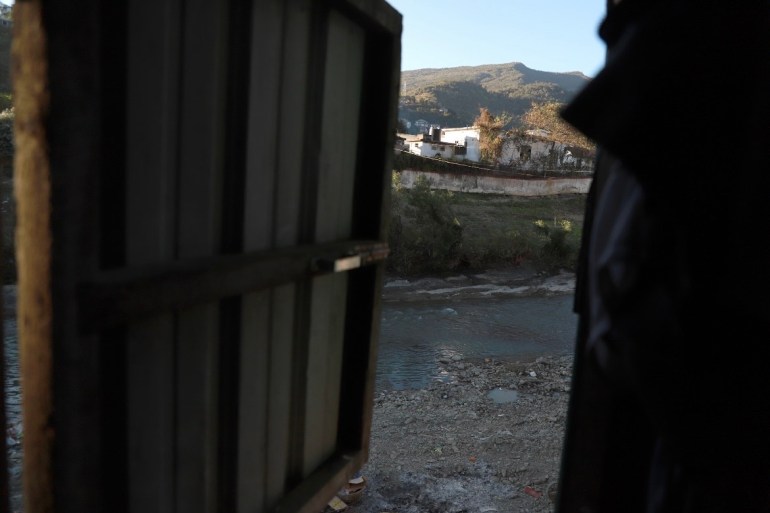
Border insecurity
To be sure, India does have its own genuine security concerns.
The Tatmadaw, the Myanmar army, has suffered significant blows in recent months, with the rebel Arakan Army running over many military outposts and making territorial gains in western Myanmar.
The Indian government’s move to fence the border is in many ways “a reaction towards a rapidly escalating and worsening war in Myanmar that poses major border security concerns for India and Bangladesh”, said Michael Kugelman, director of the South Asia Institute at the Wilson International Center, in Washington, DC.
“India wants to do everything it can to reduce the likelihood of spillover effects of the conflict in Myanmar into India,” he said.
But on the ground, managing the border is a complex affair.
The bridge over the Tiau River, connecting Zokhawthar and Khawmawi, was being controlled by the Indian Army’s Assam Rifles, along with the Mizoram Police, and rebels associated with Myanmar’s Chin National Defense Force (CNDF), when Al Jazeera visited in March.
The region just across in Myanmar “is in the people’s hands”, said Rodina, secretary of the CNDF, who — like Vanlalchaka — goes by a single name.
While the CNDF is trying to restart hospitals in the territory it controls, “we cannot admit serious patients due to lack of medical facilities”, Rodina said. “Many patients will still need to go to Mizoram for medical treatment.” It’s unclear how far that might be possible if the border is fenced.
Meanwhile, locals on the Indian side say the Assam Rifles has amped up the presence of armed personnel since the February announcement of the fencing plan.
And New Delhi finds itself in “unchartered territory”, said Choudhary of the CPR, because in the border state of Chin, the CNDF is not the only major rebel force. And the different rebel groups do not always agree. For the moment, he said, India appears to lack a coherent policy on how to deal with these multiple groups.
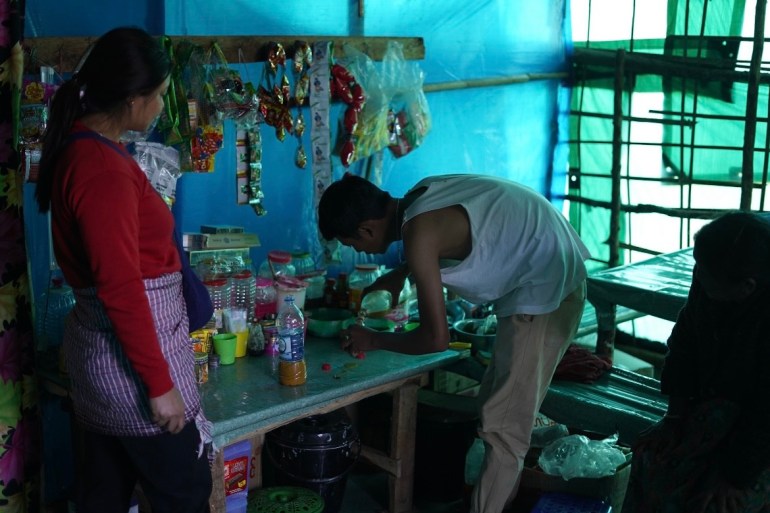
The Manipur piece of the puzzle
However, some analysts also question whether India’s new policy position is driven in part by another crisis — entirely within India — in the state of Manipur, to Mizoram’s north.
More than 200 people have been killed and thousands more displaced in ethnic violence that broke out in May 2023 and has raged ever since between the Meitei majority population of Manipur and the Kuki and Naga minorities. The state’s BJP government has been accused of fanning tensions to consolidate its Meitei support base — a charge the party has denied.
The BJP in turn has denied those charges and blamed “illegal migrants” from Myanmar for the violence. But critics say that position is aimed at drawing attention away from the government’s internal security failures.
“It is easy for them to point at the borders and say immigrants are responsible – it is just pure distraction,” said the CPR’s Choudhary.
In the past, Choudhary pointed out, Indian governments — including Modi’s — have refrained from moving ahead with border fencing even after deadly ambushes on Indian security personnel by armed fighters who crossed over from Myanmar.
If it goes ahead with fencing this time around, the Modi government risks further alienating already remote communities and “sparking a cycle of discontent, and of violence”, said Choudhary.
“It is all just going to be a mess eventually. And for what?”
